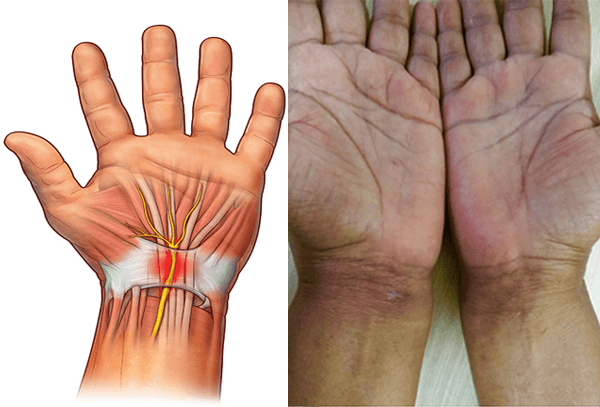Carpal tunnel release surgery is performed to treat and potentially heal the painful condition of carpal tunnel syndrome. Orthopedic doctors were previously of the view that carpal tunnel syndrome is caused due to an overuse injury or repetitive motion of the wrist or hand. But, with more research and advancement in medical science, orthopedic surgeons now know that carpal tunnel syndrome is most likely a congenital predisposition (something that’s genetic). Doctors now believe that some people simply have smaller carpal tunnels than the others, and thus are more likely to be affected by this condition. Carpal tunnel syndrome can also be caused due to an injury, like a sprain or fracture. Pregnancy and health conditions such as diabetes, thyroid disease, and rheumatoid arthritis also increases the risk factor of developing carpal tunnel syndrome.
Carpal tunnel syndrome causes numbness and tingling in the hand, pain, and eventually, loss of functioning, if not treated in time. Symptoms of this condition usually start slowly, and if not treated, may progress over time. The symptoms tend to become worse on the thumb side of the hand.
Why might I need carpal tunnel surgery?
The orthopedic surgeon will firstly suggest the patient to try nonsurgical treatments to treat the condition and see if the symptoms improve. These non-surgical treatment options may include over-the-counter medicines for pain, physiotherapy, changes in lifestyle, wearing wrist splints, or steroid shots in the wrist to temporarily help relieve swelling and pain. Carpal tunnel release surgery is successful in most patients and has a positive outcome in the long run.
The reasons that a orthopedic surgeon would recommend a carpal tunnel release surgery may include:
- The nonsurgical treatment options for carpal tunnel syndrome fail to relieve the pain.
- The patient’s quality of life is affected due to the symptoms of carpal tunnel syndrome.
- The muscles of the hands and wrists become weak and actually get smaller due to the severe pinching of the median nerve.
- The symptoms of carpal tunnel syndrome have not improved and lasted 6 months or longer.
What is the procedure of Carpal tunnel release surgery?
Carpal tunnel release surgery, or carpal tunnel decompression surgery involves cutting of the carpal ligament, which is connected to the bones in the wrist and forms the carpal tunnel. Due to pressure build up in the carpal tunnel, the median nerve does not work properly and causes pain, tingling, or numbness. Dividing the carpal ligament will release the pressure on the median nerve and treat the symptoms and also makes more room for the median nerve and tendons passing through the tunnel. The patient is given anesthesia before the surgery. With the minimally invasive carpal release surgery, the patient would get relief from the symptoms of this condition and would be able to attain maximum motion and mobility of the hand, which was not previously possible due to the syndrome.
What are the benefits of Carpal Tunnel Release Surgery?
The goal of minimally invasive carpal tunnel release surgery is to relieve the pressure on the median nerve. This is accomplished by cutting or releasing the transverse carpal ligament in the palm. A successful minimally invasive carpal tunnel release surgery does not only depend on cutting this ligament to ensure pressure relief, but also on being able to avoid causing any harm to nearby structures. When performed by an expert orthopedic surgeon, the risk of damage to any surrounding tissue can be avoided, which will help speed up recovery time. Benefits of undergoing carpal tunnel release surgery are-
- Small incisions
- Less blood loss
- Low risk of infections
- Smaller post-operative scar
- Relief from constant symptoms caused due to the syndrome
- Pain reduction
- Prevention of any further deterioration
- Enjoy maximum motion of the hand without any pain
The chance of getting maximum benefit from minimally invasive carpal tunnel release surgery depends on a wide variety of factors. An expert orthopedic surgeon is trained to perform safe and effective surgery and avoid risk of certain complications which may occur during the surgery.
Self care tips to follow after Carpal tunnel release surgery
Apart from getting proper rest and taking pain medications in time, there are certain things that the orthopedic surgeons suggest the patient to do for a smooth and speedy recovery, including-
- Keep the hand elevated.
- Use an ice pack on the surgical site for 10 – 15 minutes a few times a day
- Limit hand motion and allow it to recover.
Carpal tunnel release surgery can drastically improve the patient’s quality of life, which was previously affected by the condition. Consult the best surgeons who specialize in carpal tunnel surgery at Pristyn Care to undergo a successful carpal tunnel releas surgery.




